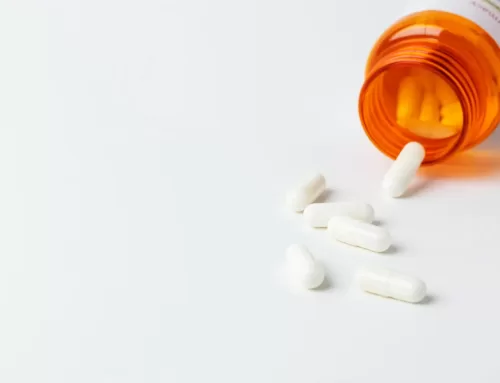
Signs You Need Professional Help: When to Seek Recovery Services
Recognizing when you need professional intervention for substance use can mean the difference between prolonged struggle and lasting recovery.
In fact, nearly80 percent of individuals with a substance use disorder delay treatment, increasing health risks and life disruptions. This guide shows seven warning signs of addiction, explains how to assess your need for help, explores available recovery services, examines co-occurring mental health concerns, outlines family roles in support, and offers strategies for sustaining long-term sobriety.
By understanding these indicators and treatment pathways, you can take informed steps toward improved well-being, supported by evidence-based recovery services.
What Are the Key Signs You Need Professional Help for Addiction?
An inability to control substance usedespite harmful consequences signals that addiction has taken hold, necessitating professional help that includes detox, therapy, or medication-assisted treatment.
How Does Loss of Control Indicate Addiction?
Loss of control over substance use occurs when you repeatedly consume more than intended or cannot reduce usage despite strong desire. This symptom reflects impaired self-regulation in the brain’s reward circuitry, reinforcing compulsive behavior. For example, someone planning a single drink may end up bingeing and feel powerless to stop.
Continuing to lose control erodes personal agency and often precedes other damaging signs, making early detection vital for seeking structured support.
What Does Neglecting Responsibilities Reveal About Substance Abuse?
Neglecting work, school, or family dutieshighlights how addiction diverts priorities and damages daily functioning. When substance use takes precedence over deadlines, caregiving, or safety, professional assessment becomes essential.
- Missing important deadlines or arriving late to work without valid reason
- Performing poorly in school or abandoning academic goals
- Ignoring family obligations, such as childcare or household upkeep
These patterns illustrate how addiction overrides obligations and undermines stability. Addressing neglected responsibilities often involves integrated recovery services that rebuild life management skills.
How Do Health Problems and Risky Behaviors Signal the Need for Help?
Physical ailments and dangerous actionsoften accompany ongoing substance use, indicating serious medical and psychological decline. Persistent health issues and reckless conduct underscore the urgency for professional intervention.
- Frequent injuries or accidents related to intoxication
- Chronic fatigue, nutritional deficiencies, or weight changes
- Engaging in unsafe situations—driving under influence or unprotected encounters
Medical complications and risky behaviors require coordinated care, combining medical detoxification with therapy to restore physical health and curb dangerous decision-making.
Why Are Increased Tolerance and Withdrawal Symptoms Warning Signs?
Tolerance develops when the body adapts to a substance, requiring higher doses to achieve the same effect. Withdrawal symptoms emerge as the central nervous system reacts to reduced intake, producing distressing physical and mental effects.
| Substance Type | Common Withdrawal Symptoms | Typical Severity |
| Alcohol | Tremors, sweating, anxiety | Moderate to High |
| Opioids | Muscle aches, nausea, insomnia | High |
| Benzodiazepines | Seizures, irritability, panic | Very High |
| Stimulants | Fatigue, depression, increased appetite | Moderate |
Growing tolerance and withdrawal episodes indicate physiological dependence that professional detox and medical management can alleviate, promoting safer stabilization.
What Does Unsuccessful Attempts to Quit Tell Us About Addiction?
Repeated failed efforts to stop using a substance reflect intense cravings and a cycle of relapse that often overwhelms personal willpower. This pattern shows that addiction functions as a chronic disease rather than a lack of motivation.
After multiple unsuccessful quit attempts—whether through cold turkey or self-imposed limits—professional treatment can introduce structured support, coping skills, and medical aids to break the relapse cycle.
How Do Changes in Behavior and Personality Reflect Addiction?
Mood swings, irritability, and secrecy often accompany substance misuse, signaling significant behavioral shifts. These alterations stem from the neurochemical impact of substances on emotion regulation and impulse control.
- Sudden aggression or defensiveness when confronted
- Social withdrawal, isolated routines, or secretive communications
- Shifts in daily habits, such as erratic sleep, hygiene neglect, or new friend circles
Identifying these behavioral changes prompts seeking recovery services that incorporate counseling and peer support to restore emotional stability and trust.
What Does Preoccupation with Substance Use Look Like?
A preoccupation with obtaining, using, and recovering from a substance shows that life revolves around addiction rather than personal goals or relationships. This cognitive fixation undermines all other interests and responsibilities.
When nearly every thought centers on planning use or managing withdrawal, professional help is needed to rebuild balance through therapies that promote alternative coping strategies and reengage valued activities.

How Can You Assess If You Need Substance Abuse Treatment?
What Are the DSM-5 Criteria for Diagnosing Substance Use Disorder?
The DSM-5defines substance use disorder through a set of clinical criteria that gauge severity. Clinicians assess these criteria to provide an accurate diagnosis and tailored treatment plan.
- Taking the substance in larger amounts or over a longer period than intended
- Persistent desire or unsuccessful efforts to cut down
- Spending considerable time obtaining, using, or recovering from substance
- Cravings or strong urges to use
- Failing to fulfill major role obligations at work, school, or home
- Continued use despite social or interpersonal problems
- Giving up important activities because of use
- Recurrent use in physically hazardous situations
- Continued use despite knowledge of a physical or psychological problem
- Tolerance and withdrawal
Meeting at least two criteria indicates a substance use disorder, guiding decisions about detox, therapy, or medication-assisted treatment.
DSM-5 Criteria for Substance Use Disorder – English
The DSM-5 provides a set of criteria used by clinicians to diagnose substance use disorders, helping to determine the severity of the condition and guide treatment planning. Meeting at least two of these criteria within a 12-month period indicates a substance use disorder.
American Psychiatric Association, Diagnostic and Statistical Manual of Mental Disorders, 5th Edition (DSM-5) (2013)
How Can Self-Assessment Tools Help Identify Addiction Signs?
Self-assessment quizzes and symptom checklists offer an accessible way to reflect on substance use patterns and warning signs. These tools clarify whether professional evaluation is needed.
- Online questionnaires gauging frequency, control, and consequences
- Mobile apps that track craving intensity and triggers
- Printable checklists mapping personal experiences to DSM-5 criteria
Using these tools encourages early recognition of problematic behaviors and motivates individuals to seek comprehensive professional consultations.
Why Is Medical Evaluation Important Before Starting Treatment?
A medical evaluation ensures accurate diagnosis, identifies co-occurring conditions, and tailors interventions such as detox protocols or medication-assisted treatment. Professional assessment prevents complications and supports personalized care.
- Verifying physical health status to determine detox needs
- Screening for mental health disorders that require integrated treatment
- Evaluating medication interactions and prescribing safe options
This clinical foundation strengthens recovery planning and promotes safer transitions into structured programs.
How Can Overcoming Stigma Encourage Seeking Help?
Stigma surrounding addiction can create shame and discourage individuals from accessing support. Addressing stigma fosters an environment where seeking professional recovery services feels acceptable and empowering.
- Educating peers and family about addiction as a treatable health condition
- Engaging in peer-led support groups to reduce isolation
- Promoting empathetic communication by professionals
Reducing stigma activates readiness for treatment and connects individuals with community resources that sustain long-term recovery.
What Types of Professional Recovery Services Are Available?
What Are the Differences Between Detox, Inpatient, and Outpatient Programs?
| Program Type | Service Level | Typical Duration | Setting |
| Detox | Medical supervision | 3–10 days | Hospital or clinic |
| Inpatient | 24-hour care | 28 days to 6 months | Residential facility |
| Outpatient | Scheduled sessions | Varies (weeks–months) | Clinic or community |
Each program type supports different stages: detox stabilizes withdrawal, inpatient provides immersive care, and outpatient enables continued therapy alongside daily responsibilities.
How Does Medication-Assisted Treatment (MAT) Support Recovery?
Medication-assisted treatment combines FDA-approved medications with counseling to reduce cravings and withdrawal, support cognitive therapy, and enhance stability.
- Reduces opioid or alcohol withdrawal intensity
- Stabilizes brain chemistry to improve therapy engagement
- Lowers risk of relapse and overdose when combined with counseling
Medication-Assisted Treatment for Opioid Use Disorder – English
Medication-assisted treatment (MAT) combines medications with counseling and behavioral therapies to treat substance use disorders. MAT can reduce cravings and withdrawal symptoms, and improve treatment outcomes.
National Institute on Drug Abuse, What is Medication-Assisted Treatment? (2021)
What Therapeutic Approaches Are Used in Addiction Treatment?
Evidence-based therapies address emotional triggers, thought patterns, and life skills crucial for sustained recovery.
- Cognitive Behavioral Therapy (CBT) to reframe harmful beliefs
- Dialectical Behavior Therapy (DBT) to regulate emotions and distress tolerance
- Holistic therapies such as mindfulness, yoga, and art therapy
These approaches foster coping skills, emotional resilience, and relapse prevention strategies essential for long-term sobriety.
How Are Virtual and Telehealth Recovery Services Changing Treatment?
Telehealth platforms and digital tools expand accessibility, offering remote counseling, digital monitoring, and peer support apps that enhance continuity of care.
- Video counseling sessions reduce geographical barriers
- Apps for daily check-ins and craving tracking
- Virtual support groups that provide flexible meeting times
These innovations promote ongoing engagement, timely interventions, and personalized recovery pathways.
How Does Addiction Affect Mental Health and Co-Occurring Disorders?
What Are Common Mental Health Conditions Linked to Addiction?
Substance use can both contribute to and worsen mental health issues, creating a cycle that professional dual-diagnosis programs must address.
- Major depressive disorder marked by persistent low mood
- Generalized anxiety disorder with chronic worry
- Post-traumatic stress disorder triggered by past trauma
- Bipolar disorder involving mood swings and impulsivity
Integrated care that treats both addiction and mental health disorders improves outcomes and reduces relapse risk.
How Does Dual Diagnosis Impact Treatment Needs?
Dual diagnosis requires coordinated interventions that address substance use and mental health concurrently, ensuring neither condition undermines the other.
- Combined therapy sessions led by cross-trained clinicians
- Medication management for both psychiatric symptoms and withdrawal
- Case coordination between therapists, psychiatrists, and support groups
This cohesive approach promotes comprehensive healing and reduces fragmented care.
What Signs Indicate the Need for Mental Health and Addiction Support?
Recognizing combined symptom patterns helps determine when to seek specialized dual-diagnosis services.
- Severe mood swings worsening during substance use
- Self-medication of psychiatric symptoms with drugs or alcohol
- Suicidal ideation or self-harm behaviors
- Social isolation and increased substance reliance
Early identification of these indicators prompts integrated treatment plans tailored to complex needs.
How Can Family and Loved Ones Recognize Signs and Support Recovery?
What Are the Signs of Addiction From a Family Perspective?
Loved ones often observe changes in behavior and routine that the individual may overlook, providing critical early warnings.
- Sudden secrecy around finances or unexplained expenses
- Frequent mood irritability or defensive reactions
- Neglect of personal appearance, hygiene, or shared responsibilities
- Withdrawal from family events or long-term relationships
These observations can guide families to recommend professional recovery services before problems escalate.
How Can Families Intervene Effectively and Compassionately?
A compassionate intervention balances accountability with empathy, encouraging the individual to accept treatment without shaming.
- Initiate calm, honest conversations focusing on observed concerns
- Set clear boundaries regarding substance use and support
- Engage a trained interventionist or counselor for guidance
- Offer to participate in family therapy sessions
Effective interventions open pathways to professional help while preserving relationship trust.
What Resources Are Available for Family Support and Education?
Educational programs and support networks equip families with tools to navigate addiction and recovery journeys alongside their loved one.
- Family support groups such as Al-Anon and Nar-Anon
- Psychoeducation workshops about substance use and mental health
- Counseling services tailored for family members
- Online resources and helplines providing guidance and referrals
These resources strengthen family resilience and improve recovery outcomes through collective understanding and support.

What Are the Best Strategies for Maintaining Long-Term Recovery?
What Are Common Signs That Indicate Risk of Relapse?
Early warning signs help individuals and support networks act swiftly to reinforce coping strategies and professional involvement.
- Intense cravings or romanticizing past substance use
- Increased stress without healthy coping mechanisms
- Social isolation or relationships with active users
- Overconfidence in ability to handle triggers without support
Recognizing these signals enables timely engagement with recovery services or peer support to avert full relapse.
How Do Aftercare and Continuing Care Plans Support Sobriety?
Structured aftercare provides accountability, resources, and therapeutic touchpoints that reinforce gains made in initial treatment.
- Scheduled follow-up therapy appointments and case reviews
- Recovery coaching or peer mentoring for ongoing guidance
- Access to alumni programs and sober living arrangements
Continuous care empowers individuals to navigate life challenges with professional and peer support.
What Role Do Peer Support Groups and Community Resources Play?
Peer groups foster shared experience, accountability, and practical advice that complement formal treatment and aftercare services.
- Regular group meetings offering empathy and diverse coping strategies
- Volunteer opportunities reinforcing purpose and communal contribution
- Community events that celebrate sobriety milestones
These social networks strengthen resilience and provide a sense of belonging crucial for long-term wellness.
How Can Family Involvement Enhance Long-Term Recovery?
Ongoing family participation extends the supportive environment established during treatment into everyday life, reinforcing healthy patterns.
- Engaging in joint therapy to address evolving challenges
- Celebrating sobriety anniversaries and setting new goals together
- Participating in family support workshops to refresh skills
Consistent family involvement bolsters motivation, accountability, and emotional stability over time.
Recovery From Addiction is a Journey
Recovery from addiction is a journey that begins by recognizing key warning signs and assessing the need for professional help. Evidence-based recovery services—from detox to therapy and peer support—address physical dependence, co-occurring mental health conditions, and social impacts. Family engagement and structured aftercare reinforce lasting sobriety, creating a resilient support network. When these strategies align, individuals gain hope, improve quality of life, and sustain recovery with the guidance of trained professionals.
If you or a loved one are seeking compassionate, effective treatment, Embark Recoveryin Prescott, Arizona, is here to help. Our team offers personalized programs designed to support every step of the recovery journey. Call us today at (928) 285-6323.
Recent
- Social Isolation and Addiction Treatment: How Prescott Rehab Helps Residents Reconnect
- From Prescription Painkillers to Fentanyl: Why People Turn to Rehab Centers Chandler for Help
- How Drug Treatment Centers Near Me Address Nightlife Triggers for Relapse
- How Peer Pressure Shapes Early Drug Habits and How Outpatient Recovery Curbs Teen Substance Abuse
- The Ultimate Guide to Choosing the Right Drug Rehabilitation Center in Prescott, AZ







